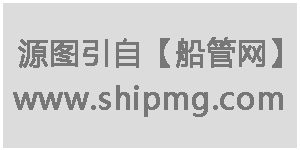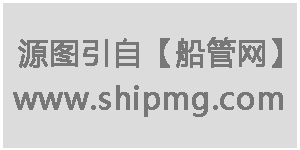内容提示:澳大利亚,地广人稀,物产丰富,是个资源丰富的国家,单就矿产来说,主要是有各种精矿,COPPER CONCENTRATES,还有ALUMINA,谷物(WHEAT, CORN,MAIZE, OATS, RYE, BARLEY, RICE, PULSE, SEEDS 以及其加工后的商品),东西北澳都有。去...
预留广告位620x60
【免费使用】点击查看详情
【免费使用】点击查看详情
对去澳洲装载此类货物的船,都有很高的要求。
下面为澳洲主要港口地图:

一、法律依据
在澳洲关于船舶货仓的主要法律和部门,我们结合下面几个名词解释来谈谈:1.AQIS ( Australian Quarantine and Inspection Service )
澳洲检验检疫局,类似于我们的检验检疫部门,公务员,不要求有航海的背景,有小姑娘,老大妈等。记住,千万不要试图贿赂AQIS的检验员,贿赂公务员,有可能要入狱。
2.DAFF
Dept of Agriculture, Fisheries and Forestry, Bio-security,这是AQIS下面的一个部门,负责对船舶以及飞机等的检验。
DAFF requirements
(Cleanliness and non Contamination)
All the packages will have to be very very carefully inspected prior loading for any contamination (dust, dirt, all wooden material must be with visible fumigation / heat treatment / pest control markings etc.)
1.Dirt, dust, bugs, insects, fungus, mold formation on wood
2.Any folds in tarpaulins must be reported, as this can result in water pocketing, bugs, insect larvae, eggs etc.
3.All wood must have ISPM 15 treatment marks.
4.Rust on any steel objects.
5.All steel items used – staples, nails etc must be of STAINLESS steel.
6.Any loose stickers / markings must be reported.
7.Others
In order to meet stringent Dept of Agriculture, Fisheries and Forestry, Biosecurity (DAFF Biosecurity – formerly AQIS) standards in Australia, Carrier is to ensure stevedores working in the holds clean their shoes prior to boarding the vsl (wet mat at gangway).
To avoid sawdust in the holds and or on cargo, Carrier is to ensure that stevedores at load ports cut dunnage on deck or ashore and pass all dunnage into the holds.
All personnel onboard vsl are nor permitted to bring food into or eat in the holds during loading/discharging ops and all holds will be inspected in Aussie for and cleaned of all leftover food items prior arrival Australia. Carrier will keep all holds clean.
Dunnage and lashing materials will be removed from all cargo prior to cargo being discharged.
Dunnage will be kept onboard and disposed of at the next discharge port not in Aussie. Passing hold cleanliness inspection and obtaining a certificate of cleanliness at load port does not alleviate carrier of liability for all time and expenses incurred to rectify causes should vsl fail DAFF Biosecurity inspection at discharge port(s).
大家仔细看这段文章,要求很严格,这是对所有船舶都是这样要求的,即使客轮。
所以,如果检验员在甲板上看到树皮,木屑,食物,泥土等,都可以严重到让你到锚地熏蒸。
3.EXPORT CONTROL ACT (1982)
这部法律是所有操作的依据。
4.SURVEYOR:
检验员分两种,一种是AQIS检验员,根据上面所说,没有海事背景,是公务员。另一种是MARINE SURVEYOR (MARINE UNDERWRITER SURVEYOR )。
The role of the MUS is to verify that the vessel is fit for the purpose of carrying bulk grain. This is done by inspecting the cargo-hold cleanliness and ship-based contaminants
such as moisture, odours, rust scale, grease or oil stains and previous cargo residues. Holds must be watertight and have a bilge pumping system in working order.
The entire hold is inspected, including horizontal and vertical surfaces, behind ladders, manhole covers, beams and bulkheads. Once the MUS is satisfied that the hold meets relevant requirements, a ‘Certificate of Approval to load Grain in Bulk’ will be issued.
接下来是根据法律对MUS的要求,注意,很严格:
Export Control (Plants and Plant Products) Order 2011
Export Control (Orders) Regulations 1982 AUSTRALIA
Part 9 Exporting in bulk vessels Division 1 Surveys of bulk vessels
32 Arrangements for bulk vessel to be surveyed before loading
The shipowner or shipowner’s agent must provide an authorised officer with a declaration, approved by the exporter of the goods, that a named marine surveyor has, or surveyors have, been appointed to survey the vessel.
33 Obligations of marine surveyor
33.1 A marine surveyor appointed under section 32 must survey the bulk vessel with a view establishing whether the vessel is suitable to carry the prescribed goods in the holds or areas of the vessel proposed.
33.2 If the marine surveyor is satisfied that the vessel:
(a) is free of conditions that could result in contaminating, wetting or imparting an odour to goods; and (b) is a suitable vessel to carry the goods in the areas proposed; the marine surveyor may issue a certificate to that effect, and if it is in paper form, give the certificate and a copy to the master of the vessel.
33.3 The marine surveyor must not issue a certificate if he or she is not so satisfied.
Level 4 penal provision Schedule 1 Marine surveyors’qualifications
(definition of marine surveyor in section 5) 1 Marine surveyors' qualifications
1.1 A marine surveyor becomes qualified for the purposes of this Order if he or she:
(a) holds either:
(i) a Certificate of Competency as Master Class 1 (Unrestricted) or its current equivalent; or (ii) a Diploma in Marine Surveying which includes a module on dry bulk cargoes issued by a nationally accredited training establishment; and
(b) has inspected at least 10 bulk vessels, while in the company of a qualified marine
surveyor conducting a survey for suitability to carry prescribed goods, over a maximum
period of 2 years.
1.2 A person who has been qualified for 3 years or more ceases to be qualified if he or she has not surveyed at least 3 bulk vessels during the past 3 years for suitability to carry prescribed goods.
总结一句话就是具有无限航区远洋船长,在老师傅带领下检验了至少10条船。
注意:这种资历只是针对谷物检验,认可的检验员可以在AIMS网站上查到
二、氧化铝跟谷物验仓的差别
1.氧化铝是非法检,发货人的检验员认可就行。该检验员并不需要在AIMS网站备案或者通过各种认证。2.谷物是法定检验,必须是通过MUS海事检验员的认证+AQIS检验员的认证。一般都是先通过海事检验员的认证,再安排AQIS检验员登轮。
这里要注意,该两类检验员都不一定是只检验货仓,对个相关场所都有权利检查。
3.该两类检验员还是各有重点,海事检验员以货仓为主,AQIS检验员以全船为主。
三、对货舱的要求
氧化铝跟谷物对货仓的要求基本相同。GUIDANCE NOTES FOR VESSELS ARRIVING AT AUSTRALIA TO LOAD GRAIN
Vessels loading grain for export in Australia are subject to stringent regulations under the EXPORT CONTROL ACT 1982, Grain, Plants and Plant Products Orders No. 6 of 1984, which stipulate that:
1.Vessels loading grain are subject to survey by an approved grain accredited Marine Surveyor and Australian Quarantine and Inspection Service (AQIS) for cleanliness and infestation or the presence of materials which could lead to infestation.
2.A loading permit will only be issued by the AQIS surveyor after the grain accredited Marine Surveyor has issued a certificate stating that the holds of the ship are fit for the carriage of grain.
The Masters of vessels intending to load grain in Australia for export should ensure that, prior to the time of inspection:
• Details of the vessels particulars, the last three previous cargoes and the last grain cargo are available.
• All spaces to be loaded with grain are thoroughly clean and dry, free of odour, gas or fumes, free from previous cargo residues, insects, rust scale and flaking paint. Particular attention should be paid to areas likely to trap previous cargo residues, scale and dirt such as hatch covers, coaming ledges, deck beams, frame knees, brackets, horizontal surfaces, pipe brackets, pipe flanges
• Bilges are clean, dry, odourless and in working condition. Bilge plate perforations should be clear and the bilges, and any scuppers, should be made grain tight with new, clean hessian or similar porous material
• Spaces adjacent to cargo spaces to be loaded, and store rooms, including those for foodstuffs, are free from insects
• Any wooden structures such as tank top sheathing are clean, completely dry, free from insects and grain tight. Green timber is not permitted
• If possible, ballast holds are empty and ready for inspection as outlined at the same time as other holds to avoid a costly second inspection
• Hatches are fully open
• An aluminium ladder is in place, available for the inspectors use in the first hold to be inspected (usually hold No. 1). If a second ladder is available, that should be placed in the second hold to be inspected. Drums, brooms, scrapers and dustpans should also be in place. (In the interests of safety, it is not permitted to lower or raise anything into or out of holds whilst inspectors are in the holds. Thus, a good deal time can be saved by having the necessary items in the holds before the inspectors enter).
At the time of inspection, an officer with a ‘walkie talkie’ radio should accompany inspectors in the holds, and another officer with a radio should be standing by on deck at all times. The ship’s engineers should be on stand by to operate bilges for testing (dry sucking only). Sufficient crew should be available to carry out on the spot cleaning if necessary.
If the holds are found unfit to load grain, cleaning and/or fumigation may be ordered by the inspectors prior to issuing of a permit to load with subsequent delay and considerable expense.
Cargo spaces used for the carriage of processed grains such as white rice, malt and hulled oats, bagged rice or other grain cargoes which are highly susceptible to discolouration and taint should have a complete paint coat with no bare metal, rust, rust scale, rust powder or rust staining evident at all. All paint must be applied in sufficient time for it to completely dry and be free of odour in accordance with the paint manufacturer’s instructions well prior to the arrival of the vessel at the load port (usually, with marine coatings, at least seven days is required for the paint to fully ‘cure’).
The term ‘grain’ includes wheat, barley, rice, oats, canola, maize, peas, sorghum, soya beans, sunflower sees, linseed and rye
NB The importance of properly preparing cargo spaces to load grain cannot be over stressed. Inspectors will only issue certificates and permits when all cargo spaces are considered fit to be loaded (with the possible exception of holds which have been ballasted). If inspectors consider that further cleaning and/or painting is required, delay and expense are inevitable. Elevated work platforms (‘cherry pickers’), high pressure water washing machines and shore labour will usually be needed and the vessel will probably have to shift to a lay-by berth until the work is completed.
These notes are issued for the guidance of shipowners and operators only. No guarantee or warranty is given, or liability accepted, with regard to their comprehensiveness or accuracy.
最主要的不同点应该是对TANK TOP锈蚀的要求吧。
对谷物来说,硬锈(指的是用铁锤敲打都敲不下来的)是允许的,对氧化铝来说是不允许的,氧化铝要求的是出白。
当然这里,我们通常说的水锈(TEMPERATURE RUST)表面的一层薄锈,手套擦过,基本干净的是没有问题的。
另外,尽量不要用油漆。
1. 有可能不能做到干透。有气味是不允许的。
2. 干透的油漆又有可能会形成RUST SCALE.用铲子不能铲掉为标准。

四、验舱的程序
验舱的程序在上面的英文里有所描述,下面只提几个重点:1.一般都是先甲板,检查舱口围,甲板,舱盖板,通风口,以及各种可以看到的,或者借助工具可以检验的地方,比如:会用高压空气去吹:
2.从No.1舱前面的直梯下,后面的澳梯上,梯子当中的平台可以观察高空UNDER DECK AREA,以及梯子的背面等。
3.舱底的管子背后,FRAME的背后,污水井,人孔, TANK TOP的锈蚀情况等都是重点。
4.通道,梯子要注意,不要有断裂或严重锈蚀,如果检验员觉得不安全,可以拒绝下舱。
5.各种管子不能破,破洞是不允许的,最严重的话,检验员可以认为里面有虫子等外来生物,下令去熏蒸。
6.用来爬高的梯子应该可以到达FRAME的最下端,最起码有两副,用来交替使用,检验NO.1 HOLD时,另外的一副应该在下一个舱。
7.交流。相对来说,我们中国籍的船通不过的比例是比较高的,最主要的原因还是交流。因为语言,习惯,还有生活方式,观念的认识不一样吧。比如:我们很多船员习惯了说YES,有时没有听懂就说YES.还有我们中国人骨子里的观念,都是认为可以中庸的,其实,老外习惯了一是一,二是二。
我的建议,船上应该有2个队,大副带水手长等4-5个人 ,跟随检验员,有小的缺陷马上改正,船长带木匠等几个人第二梯队吧。当然,机舱人员也要加入,比如烧焊等工作,一定要马上做,只要是人做决定的时候,就会考虑态度。
五、澳洲检验公司介绍
CR COX是澳洲最大的检验公司,成立于1950年,共有四十多个检验员,在东澳西澳几个主要港口都有办公室及取制样室。澳洲氧化铝出口的百分之九十都是他们在操作,目前针对澳洲氧化铝及谷物推出海外预检,就是准备去澳洲装谷物或者粮食的船舶可以提出在中国,新加坡等地预先申请检验,公司根据船舶实际情况提出一些建议,指导船员洗舱,扫仓,提高通过机率。





































